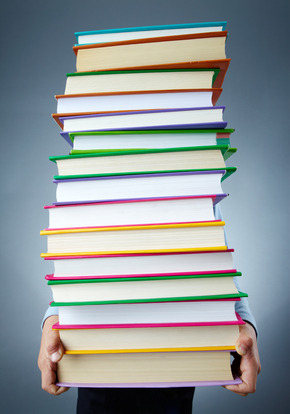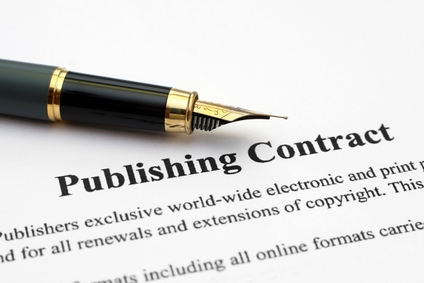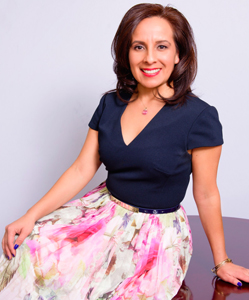Book Proposal and Additional Information
 Positive Tones: When writing a self help or how-to book, it should be written in a positive tone. It’s important for the reader to feel inspired as they read. It should also be motivating. If the book is not written in a positive or motivating tone, you run the risk of turning away readers. Your book should encourage a person to want to follow this step-by-step process so that they can get good results. The results can vary as it depends on the book that you are writing. The focus of the book can be to possibly change how a person may feel towards someone or something, it may be to find a new method that inspires through a recovery or self discovery journey, or it can add knowledge on how to construct or do something. The list is endless.
Positive Tones: When writing a self help or how-to book, it should be written in a positive tone. It’s important for the reader to feel inspired as they read. It should also be motivating. If the book is not written in a positive or motivating tone, you run the risk of turning away readers. Your book should encourage a person to want to follow this step-by-step process so that they can get good results. The results can vary as it depends on the book that you are writing. The focus of the book can be to possibly change how a person may feel towards someone or something, it may be to find a new method that inspires through a recovery or self discovery journey, or it can add knowledge on how to construct or do something. The list is endless.
Using Real Events: By using real events as you write will help give credibility to your book and allows the reader to connect. The reader begins to identify with you and what you have to say. Using these techniques can create powerful stories that move people to the next step or plateau. It’s these real life achievements or life situations that will help your reader identify with the message you are trying to achieve within your book.
Clear and Concise Writing: Your writing should be as concise as possible so as not to confuse the reader. The message should be clear. Each point should build upon the other and should move the book forward. Don’t hash over the same information because the reader may become bored and decide to stop reading.
Make sure that the steps are clearly broken down for the reader and address one issue at a time. Don’t confuse the reader by discussing various issues all at once. Discussing multiple issues at once can cause you to lose sight of the overall message you are trying to drive home to the reader. Be sure that you provide strategies and ways to get through the processes or steps and especially when you are dealing with more complex issues.
Editing: All of us wear two hats when we write, that of an editor and that of a writer. You must leave your editor hat off when you first begin to write. When you begin the editing phase, you can then put your editor’s hat back on. This is not always easy to do, but in order to get good results you must work towards this.
As you edit, don’t try and edit everything at once. Use a checklist on how you will approach this editing process. Begin by first making a list of all the things that you will edit. Only then should you begin to edit your writing. Go down the list and check the item off the list once it has been completed.
Remember to only edit for one thing at a time as this will ensure that you capture all the things that are incorrect or need rewriting. If you edit for more than one thing at a time, you run the risk of going off on a different tangent and possibly missing important items that should have been caught.
Proposals and Publishers: When writing a self help or how to book, it’s advisable to first obtain a publisher and then write the book, unless you will be self publishing.
 It’s really not a difficult process and simply involves getting a proposal out to publishers for their buy-in and input. Being an expert or having extensive knowledge on something is a good qualifier for publishers. If you have a degree or credentials in this subject, this is also a plus. If you are recovering or have recovered from a particular affliction or addiction, it can be a big plus for self discovery type books. This is the type of information that publishers look for in publishing.
It’s really not a difficult process and simply involves getting a proposal out to publishers for their buy-in and input. Being an expert or having extensive knowledge on something is a good qualifier for publishers. If you have a degree or credentials in this subject, this is also a plus. If you are recovering or have recovered from a particular affliction or addiction, it can be a big plus for self discovery type books. This is the type of information that publishers look for in publishing.
By sending out a book proposal to a publisher, you may get invaluable insight as to the timing of your book according to publishing schedules, or a better writing strategy, and maybe even a marketing approach. It could be that your book idea is too shallow or too extensive and publishers could provide insight into what could potentially work better.
In order to be successful, you should have a strategy already in place as to how you will reach your goals. You should have defined your audience, created a great title, developed a good structure and outline for your chapters, and be ready to present yourself as an expert to the various publishing companies and organizations.
Sending your proposal to a publisher can be intimidating, especially if you have never done this before, or if this is the first time you are sending out material. But, it doesn’t have to be daunting.
Using an agent is probably the best way to begin. This approach may work better as agents usually have more insight as to what publishers are looking for and most likely have built relationships with editors that may be interested in your material. You don’t necessarily have to go through agents; however, remember that if you don’t, you run the risk of having your material sit in a slush pile before editors get to it.
A Professional Proposal
Listed are some guidelines to a professional proposal. In order to have a professional looking proposal you should include the following:
- Include a cover letter; includes theme and strategy of your book.
- Include a title page with your name and address.
- Include pages on how your book compares with others, your target audience, how you will market and promote your book, and how long it will take you to complete, and what’s included in your book.
- Include your proposed table of contents.
- Include a detailed chapter outline.
- Include a sample chapter.
- On each page of the proposal include your name, the title of the book, and the page number in the upper left hand corner.
- Use one-inch margins on all sides.
- Always double space and use standard 12 point courier font.
- Be sure typing is on one side only and use white bond paper. Do not use fancy, colored, or erasable paper.
- Label all your attachments.
- Send out with a SASE (self addressed stamped envelope) for return of your material or response from an editor or publisher.
Remember, you don’t have to use all of these techniques in your book. Just chose the ones that are applicable to your book and your style of writing and what you believe will give the reader the most information in the easiest way possible.





